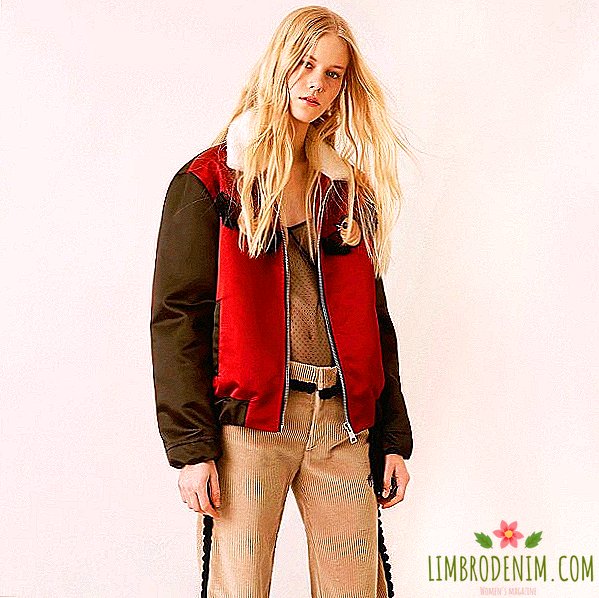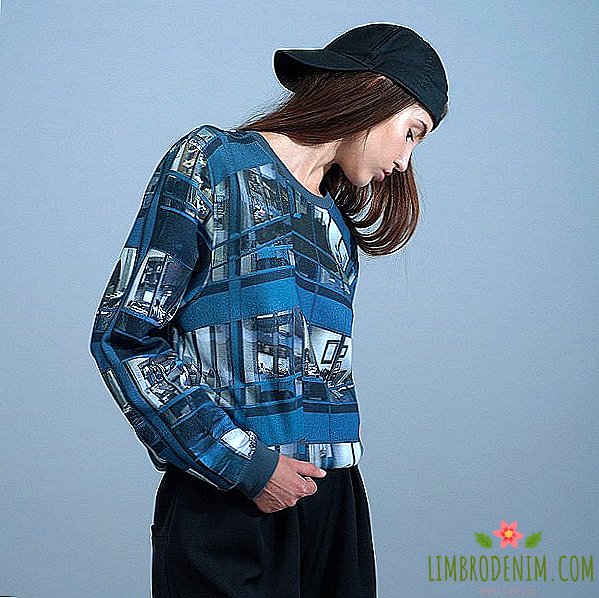How to dress up a ballerina and opera singer: I do theatrical costumes
We more or less imagine how to sew the usual clothes - the Internet is full of films and reports covering the details of the process - but few people know about the creation of theatrical costumes. To find out, we asked the technologist of the Lida Holding atelier Elmira Karabanov about all the stages of theatrical costume production, the difficulties of working with theaters, the choice of materials, fitting with actors and much more.

Work is not a profession
My position does not have a clear title, and I have no strict set of responsibilities; Depending on the project, tasks may vary. In some theater workshops this is called a technologist, in others - an artist-technologist. By past experience in international FMCG-companies (Fast Moving Consumer Goods - refers to consumer goods in the English-speaking environment. - Approx. ed.) I myself perceive more as a project manager. In fact, I am responsible for the full cycle of making costumes - so that the sketch of the artist turns into an outfit to the premiere of the play, which the viewer will see on stage.
I am looking for solutions on how to implement the idea, but first you need to understand what the costume designer wants. Sometimes, he draws a sketch in detail and one hundred percent sure what the finished outfit should be, and sometimes, he gives me a collage or a schematic drawing, and only in the process of fitting we get an understanding of what will come out. In any case, "chemistry" with the artist - is half the success. Another big layer is working with craftsmen in a sewing workshop. It is necessary to check the work at each stage, otherwise, if you miss some important point, you have to unpick almost the finished product and alter it again.
Not less than 40% of my working time is fitting. All theatrical costumes that we do are sewn to specific people, and we make a fitting for each person. I am responsible for organizing the fittings, I attend almost everyone, agreeing on the nuances and changes that may occur with the suit. My responsibilities include the selection, purchase of materials and accessories, matching costumes in the form, cut, finishes. I buy materials even if, say, the bobber for jackets suddenly ended - this can threaten with idle work for one or two days, which we cannot afford, of course. If there are, for example, hats or chevrons in a suit that we do not manufacture ourselves, I search and work with contractors.
I did not plan to do just that and came to work without special education and experience. I graduated from Moscow State University. She received a second degree in management and marketing in the fashion industry at MGUDT, in collaboration with the French design school ESMOD. After graduation, she worked first as an account manager at an advertising agency, then worked in marketing at large FMCG companies. At some point I thought that it was more interesting for me to develop my own business than to work in an international corporation, and it all coincided with the fact that one more person was needed in the family business.
Atelier was founded by my aunt back in 1988. Since childhood, she loved to sew and already in the third grade she wore dresses of her own making. In the studio she made women's clothes to order, among the clients she immediately appeared well-known TV presenters and wives of diplomats; gradually it all grew into a whole factory, albeit with a focus on men's clothing.
Subtleties at every stage
We sew costumes for various - both classical and modern - performances. If you want to preserve historical authenticity, then you need to follow certain laws of cut and patterns that correspond to the era, choose only those fabrics that were used during the time of the production. In modern costumes, however, the artist’s imagination does not limit anything. For example, in the winter, we made outfits for staging “The Passion of the Queen of Spades” for the Bashmet theater festival: one of the soloists had a fur coat made of faux fur with a llama workout, painted in bright green. Of course, in the classical formulation such is impossible to imagine.
Our business card is tutus and men's suits: tuxedos, business cards, tails, and both historical and modern. We have a lot of experience in working with such products: there is a team where each person has his own perfect operation. Difficulties may arise only if the artist decides to make changes in the process of fitting, but not always, when the product is already cut, it is possible. But in general, we sew almost everything.
For example, they recently made the most beautiful couture evening dresses, like those of Dior of the 50s, for the opera “Bal-Masquerade” at the Bolshoi Theater, and now we are creating costumes stylized as the ancient Egyptian era for the ballet “Pharaoh’s Daughter”. We rarely take on very fancy costumes that require great artistic refinement - for this you need to have a whole art workshop. But if we undertake such, then we return for revision to our colleagues in other workshops.
Women's suits will not be able to drive under a single pattern, whereas in men's suits honed technology. It’s more convenient that one person is responsible for the first, and a team of six or seven craftsmen is responsible for the second, each of whom has his own
To make a suit, you need at least two people: this is the designer - he builds the patterns, cuts out the product and does the fitting - and the tailor who sews the thing. Our costumes are usually made by one master, but if you need to act quickly, we can break up the work into several people. They differ from masculine ones by a large variety of forms and materials, which requires more laborious work and practically a jewelry approach.
Women's suits will not be able to drive under a single pattern, whereas in men's suits honed technology. It is more convenient that one person is responsible for the first, and a team of six or seven craftsmen is responsible for the second, each of which has its own operation: someone makes collars, someone has sleeves, someone has a lining, and so on. This allows you to significantly increase the speed and quality of work. For example, if the jacket was sewn by one person, the work on it would take at least a week. We can sew twenty-five suits in the usual working rhythm during this time. But in all the workshops in different ways, we went to this distribution for more than one year through trial and error.
For materials, we go to Italy several times a year, where we make a big purchase. Unfortunately, in Russia, the situation with the deplorable tissues, practically no quality. Many manufacturers leave the market; no alternative to a product from Europe can be found. Everything is a bit simpler with accessories: many European suppliers have representative offices in Moscow with which we cooperate.
Difficulties may be most unexpected. For example, we found an excellent fabric, we try to paint it, but it either doesn’t paint at all, or not as it should - then we have to look for a replacement. Or the composition of the performers changes when the product has already been found for another person - you need to redo it.
Difficulties arose in working with European theaters: when we began to work on the “Ball-Masquerade” for the National Bavarian Opera, we were sent a sample of a costume using DHL, which eventually hung for a long time at customs. We went through terrible paperwork and paid heavy customs duties - it would be easier and cheaper to just fly to Munich and pick up a suit there.
It is very disappointing that in Russia there are no conditions at all for the development of business in Europe. There was a case when we went to try on the Lithuanian Opera and Ballet Theater, carried ballet tutus with us, and detained us at customs: in the packs were metal steel, which apparently turned out to be suspicious for airport employees. It’s good that the head of the theater workshops came after us and talked to the customs officers, because they didn’t want to let us go, considering them to be smugglers.
Prices for costumes can be very different. The cost is affected by fabric, complexity, timing. If the theater is not in Moscow, then transportation costs are taken into account. I have no right to tell, so much theatrical outfits cost, but I can name the price of men's suits to order - it starts at forty thousand rubles.

Entrance by invitation
We regularly work with the Bolshoi Theater, also collaborated with the Moscow Art Theater. Gorky, the Yekaterinburg Opera and Ballet Theater and the Mikhailovsky Theater. Sewed costumes for European theaters: the Bavarian Opera in Munich, the Lithuanian and Paris Operas, made several costumes for the theater festival in Aix-en-Provence.
To get to the theater without a recommendation is almost impossible, and they have their own sewing shops. But often there are great performances, where there are a lot of costumes, and this volume cannot be performed by familiar masters. For example, this season we sewed costumes for the ballet "Paquita" in the Yekaterinburg Opera and Ballet Theater: about two hundred outfits are involved in the performance, and less than ten people work in the sewing workshop of the theater. They are already loaded to the fullest, because in the theaters there is always enough work on the current repertoire - these are new entries in productions, repair of costumes. Often we get acquainted with new places for us thanks to costume designers, who can recommend to contact us.
I can’t imagine a situation for the theater to refuse an order - these are budget organizations, we participate in tenders, sign documents. Repertoire theaters also plan in advance. Often there are other situations where, say, two weeks before the premiere, a new sketch appears or some costume that we have already sewn is canceled. It happens, we hand over the costume a month before the premiere, and then the artist recovered or lost weight. But still, there will be costume rehearsals before the premiere, so there will be a couple of days to fix the fit.
If we sew for opera singers, we must not forget that the main thing is to make it convenient to sing. For a ballet costume it is very important that there are no mistakes in the cut: if something breaks in the dance, no one will forgive us for such an error
From the last, the most interesting order is the Ball-Masquerade in the Bolshoi, which I have already mentioned. The opera was moved to the 50s, the director was inspired by the work of Hitchcock, in particular the film "Birds", and many of the costumes in varying degrees were elements of these animals. For example, on evening dresses there was an imitation of a living bird, some were decorated with feathers - everything looked very realistic, incredibly beautiful. Costume designer was made by Italian Marianna Fracassso, behind her positions in fashion houses, for example Max Mara, - I think it played a role, because the outfits were very elegant, with lots of details. But it was difficult - we worked for two months almost without days off, did a tremendous job.
It is always very interesting to work with artists, all charismatic, often on fittings, fascinatingly tell the different nuances of the productions in which they are involved. Sometimes the costume also “plays” in a performance with an actor: for example, you may need a pocket in an unexpected place to hide some object.
There are cases when artists fundamentally dislike their costume, and, if there is an artist in the fitting, they can agree on changes. But, of course, without the consent of the artist, we can not change anything. If we sew for opera singers, we must not forget that the main thing is to make it convenient to sing. For a ballet costume it is very important that there are no mistakes in the cut: if something breaks in the dance, no one will forgive us for such an oversight. Even costumes for musicians require a lot of attention depending on what instrument the artist plays.
Cons and pros
I have been working in Lida for four and a half years, and I enjoy it incredibly. She loved the Bolshoi Theater very much and began to attend it as a spectator much more often - especially performances in which our costumes participate.
It is very difficult for me to start the working day at 8:30 am, but here, unfortunately, it doesn’t work out otherwise, because everyone depends on each other, no one can be left out of the work cycle. I really don’t like the collective vacation in August, but here we are already dependent on theaters that go on holidays.
Crisis moments sometimes happen. First of all, it is not easy to work with people with whom you have related relationships. At first it was hard, because I did not understand the specifics of sewing production. Now, too, there are often situations when I do not understand how to solve the problem from the technical side. But I know who I can consult with, in order to understand how this is done in the future - it turns out such a constant “learning on the job”. There were times when I started to worry: “How is it, I refused a good compensation package in the field of FMCG, from projects with large budgets”. Here, the scale of business is, of course, quite different: everywhere and in everything you need to save money in order to be profitable. But job satisfaction is also incomparably higher.
Photo: Bolshoi Theater, uralopera.ru





